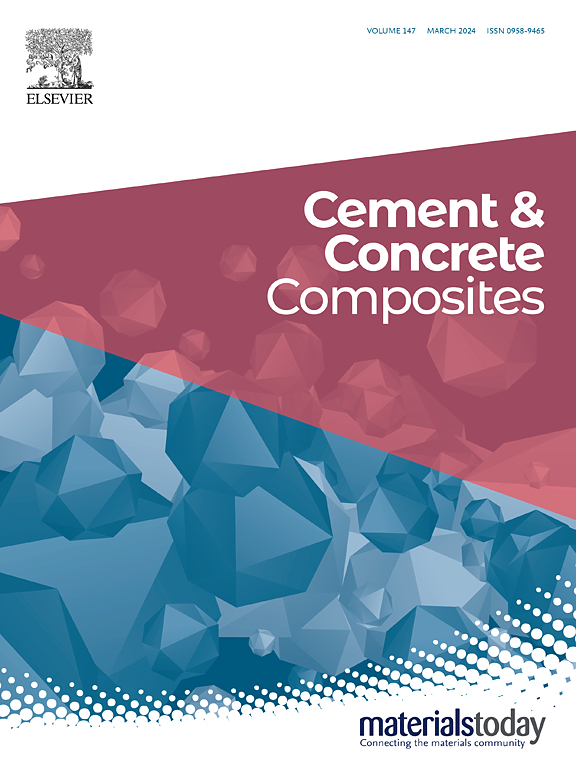Thermodynamic modeling of carbonated Portland cement under groundwater and seawater conditions
IF 10.8
1区 工程技术
Q1 CONSTRUCTION & BUILDING TECHNOLOGY
引用次数: 0
Abstract
This study aimed to investigate the phase assemblages of Portland cement (PC) samples and eluate compositions for various water compositions and liquid/solid (L/S) ratios using thermodynamic equilibrium calculations. Specifically, diverse groundwater and seawater compositions were selected as eluates to represent practical leaching conditions. Samples made of PC with carbonation degrees of 0, 10, 20, and 30 % were modeled under exposure to pure water, CO2-rich and sulfatic groundwater, and normal and CO2-rich seawater leaching conditions. The phase alterations, leached amounts of ions, and changes in the C-S-H compositions of normal or carbonated samples with exponentially increasing L/S ratios were observed. The carbonated samples showed decreased Ca leaching but accelerated decomposition of C-S-H due to the formation of calcite. In addition, the formation of thaumasite was significantly greater in the carbonated samples under the sulfatic groundwater and normal seawater leaching conditions. Subsequently, the modeling outcomes were compared with results from field studies reported in earlier literatures on the leaching of PC systems to bridge the calculations to realistic leaching behaviors.
地下水和海水条件下碳化硅酸盐水泥的热力学模拟
本研究旨在通过热力学平衡计算研究波特兰水泥(PC)样品的相组合以及不同水成分和液固比(L/S)的洗脱物组成。具体而言,选择不同的地下水和海水成分作为淋洗液来代表实际的淋滤条件。在纯净水、富co2和硫酸盐地下水、正常和富co2的海水浸出条件下,模拟碳化度为0、10、20和30%的PC样品。随着L/S比呈指数增长,观察了正常或碳化样品的相变化、离子浸出量和C-S-H组成的变化。碳化后的样品由于方解石的形成,Ca的浸出减少,但C-S-H的分解加快。此外,在硫酸盐地下水和正常海水浸出条件下,碳酸盐样品中梭马石的形成明显更大。随后,将建模结果与早期文献中关于PC系统浸出的现场研究结果进行比较,以将计算与实际浸出行为联系起来。
本文章由计算机程序翻译,如有差异,请以英文原文为准。
求助全文
约1分钟内获得全文
求助全文
来源期刊

Cement & concrete composites
工程技术-材料科学:复合
CiteScore
18.70
自引率
11.40%
发文量
459
审稿时长
65 days
期刊介绍:
Cement & concrete composites focuses on advancements in cement-concrete composite technology and the production, use, and performance of cement-based construction materials. It covers a wide range of materials, including fiber-reinforced composites, polymer composites, ferrocement, and those incorporating special aggregates or waste materials. Major themes include microstructure, material properties, testing, durability, mechanics, modeling, design, fabrication, and practical applications. The journal welcomes papers on structural behavior, field studies, repair and maintenance, serviceability, and sustainability. It aims to enhance understanding, provide a platform for unconventional materials, promote low-cost energy-saving materials, and bridge the gap between materials science, engineering, and construction. Special issues on emerging topics are also published to encourage collaboration between materials scientists, engineers, designers, and fabricators.
 求助内容:
求助内容: 应助结果提醒方式:
应助结果提醒方式:


